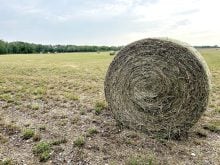Reuters / Black carbon, the soot produced by burning fossil fuels and biomass, is a more potent atmospheric pollutant than previously thought, according to a new study.
Emitted by diesel engines, brick kilns and wood-fired cookstoves, black carbon is second only to carbon dioxide as the most powerful climate pollutant, according to the study published in the Journal of Geophysical Research-Atmospheres.
But because black carbon only lasts in the atmosphere a matter of days, compared to carbon dioxide’s atmospheric endurance of centuries, addressing it could be a prime target for curbing global warming, the report said.
Read Also

Hail research hopes to benefit potato growers
Alberta research scientist measures hail storm and heat dome affects on potato crops
“This new research provides further compelling evidence to act on short-lived climate pollutants, including black carbon,” said Achim Steiner, chief of the United Nations environment program.
The report found black carbon’s effect on climate is nearly twice what was previously thought.
The new assessment found black carbon emissions caused significantly higher warming over the Arctic and other regions, could affect rainfall patterns, including those of the Asian monsoon system, and have led to rapid warming in the northern United States, Canada, northern Europe and northern Asia.














